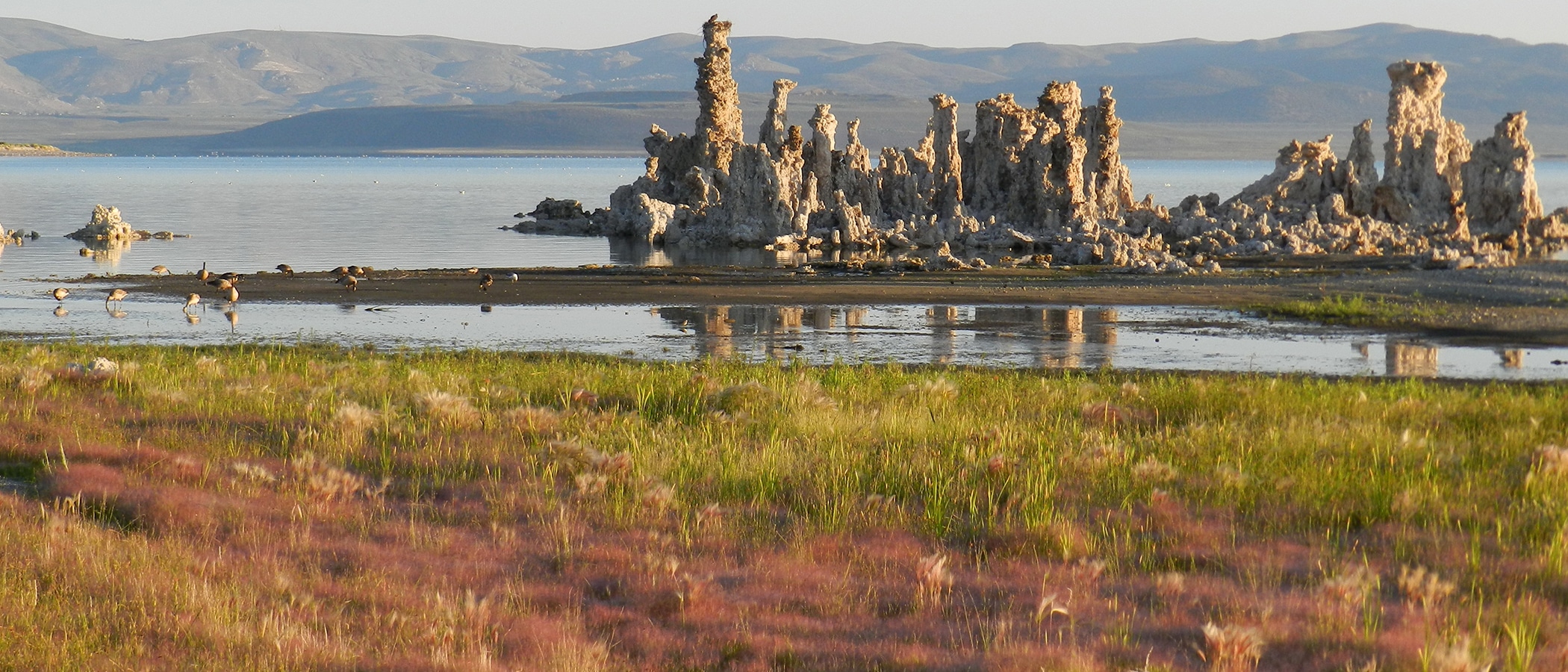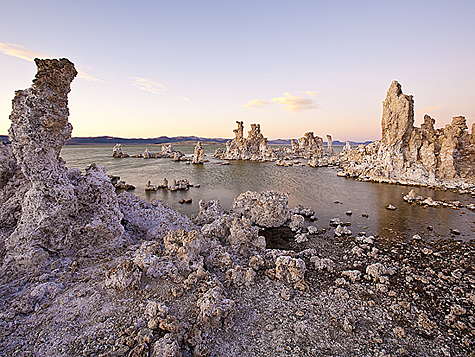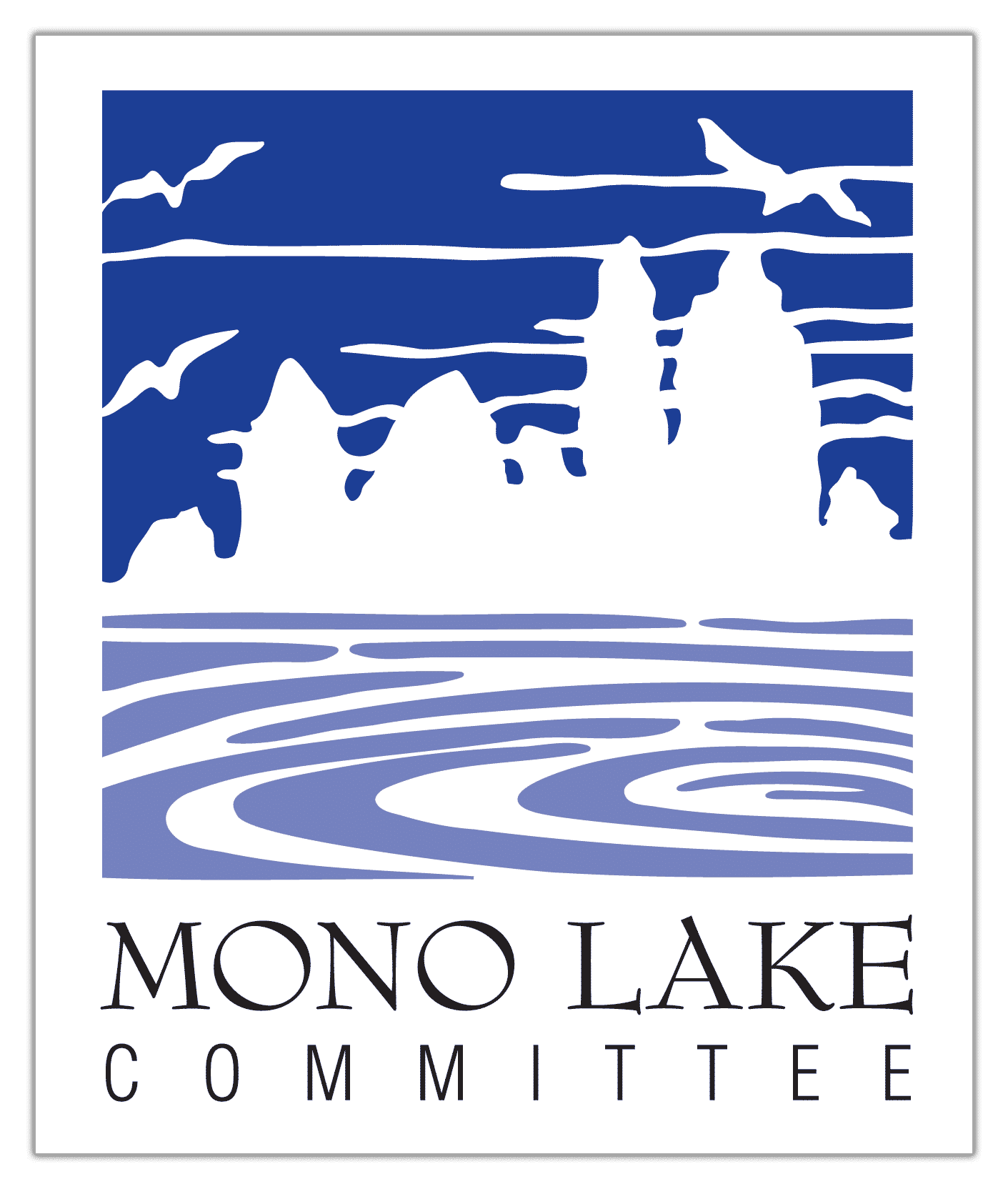
In the fall of 2009 Richard Roos-Collins was presented with the Mono Lake Committee’s Defender of the Trust Award which acknowledges outstanding work protecting the Public Trust. His remarks at the award ceremony are included in the 2011 Mono Lake Calendar.

I am truly humbled and grateful to be a member of the team that won one of the greatest environmental cases of the past century.
This victory resulted from the efforts of many scientists, attorneys, and advocates who contributed in countless ways over more than 20 years of active litigation. Some are present tonight: Sally Gaines, founder of the Committee and Director; Martha Davis and Geoff McQuilkin, former and present Executive Directors; Ilene Mandelbaum, Heidi Hopkins, and Lisa Cutting, Eastern Sierra Policy Directors; Greg Reis, Information Specialist; Scott Stine and Peter Vorster, consulting scientists; and Bryan Wilson and Patrick Flinn, your attorneys. I also recognize Mark Drew, Eastern California Conservation Director for California Trout and Gary Smith, Department of Fish and Game biologist.
These and many others not present tonight overcame inertia and unreasonable odds to achieve the victory of Decision 1631 (1994) and the related court cases.
Martha Davis says that each person involved in these cases tells a story about their first day. Here’s mine: On October 1, 1991, Dick May, president of California Trout, asked whether I would be willing to represent them in a field hearing which Judge Finney was conducting that week on an interim flow schedule. “Only a day or so…. We will see where it goes.” Here I stand, 18 years later, grateful for that chance.
A grand passion motivated the Mono Lake cases. It was more than the ordinary commitment which any party brings to a big case. It was more than the fierceness necessary to challenge a stronger opponent. Indeed, since these cases resulted in settlement, it’s fair to say that, here, David and Goliath agreed to a treaty to advance mutual interests. The grand passion—which drove the litigation and the settlement—was based on a fundamental commitment to correct an historic injustice to this unique and extraordinary place.
In 1940 the predecessor to the State Water Resources Control Board granted Los Angeles Department of Water and Power the unconditional rights to divert all flows from the tributary creeks to Mono Lake. The state acknowledged these diversions would cause certain impairment of these resources, and reasoned simply that, under the Water Code
as it understood it, municipal water supply trumped all other uses. By 1978, that legal error inevitably resulted in significant and unnecessary damage to these resources. These cases corrected that historic injustice.
A fundamental principle of ethics is stated in the query: “If not us, who? If not now, when?” These cases were driven to correct that historical injustice before irreversible damage occurred to Mono Lake and its tributaries.
Let me tell one story about this driver. During the 1993–94 hearing before the Water Board to amend these water rights, Los Angeles’ attorney asked a question one way, then another, and then again, to challenge a witness’ opinion. Mono Lake Committee lead attorney Bruce Dodge stood: “I object.” The Board’s Hearing Officer, Marc Del Piero, responded: “What is your basis? Mr. Dodge, you must have a basis.” Bruce paused, then said: “Life is short.” Although he is naturally impatient, as any Committee staffer or friend knows, the objection was more than that. He could have offered familiar technical grounds—repetition, badgering the witness, or argumentativeness—but the objection was better than that. Bruce summed up in three words the imperative to preserve the public trust in Mono Lake. The Hearing Officer chuckled, and for the first time in Anglo-Saxon jurisprudence, granted that objection.
What was the fundamental meaning of the Mono Lake cases? Of course, they resulted in orders which are restoring this unique and extraordinary place for the benefit of this and future generations. That is the physical and legal reality. But why do they also inspire, like a parable? People involved in water resources all over the world know enough about these cases to believe that something magical happened here. What?
These cases are about hope as a strategy.
I met David Gaines on April 15, 1978, shortly after Sally and he started these cases. I saw his slideshow, explaining the imperative to change Los Angeles’ water rights. I thought: “That is a bold dream.” Since David’s story is familiar, let me tell the story of another hero whose hope was also indispensible to bringing this bold dream to life.
Elden Vestal was the Department of Fish and Game’s biologist in the Mono Basin in 1940, when Los Angeles secured its water rights. He knew those rights were incompatible with the public trust, and promptly issued a letter order to Los Angeles, under his own authority as the Department’s local representative, commanding a reduction in diversions. The Department reversed that order. His family and he moved to Fresno. He later said that he did not have the heart to witness the destruction of this beloved place, once stripped of water.
Yet Elden’s heart—his hope—inspired him to keep carbon copies of his field records from the 1930s. These records described the water flows, channel forms, trees, and other physical conditions of the creeks—and of course, the fishermen’s successes and their stories. He kept those carbon copies across five decades of moves and other responsibilities, long after the official records had been lost.
In 1989, Committee expert hydrologist Peter Vorster met him at his final home in Santa Rosa to discuss a technical issue in the remedy phase of the cases. Elden asked: “Are you interested in historical records before the diversions? I kept my weeklies.” For once, Peter was at a loss for words. Those records were instrumental in overcoming Los Angeles’ defense that their diversions had not substantially worsened the conditions that had resulted from local irrigation uses in the 1930s. The interim remedies established by Judge Finney, and the final order issued by the Water Board in Decision 1631, were a function of Elden’s hope and records, as well as the later efforts by Peter, Scott Stine, and our other scientists to deduct those historical conditions. On September 28, 1994, after the Board issued its decision and recessed, Elden stood on the steps of the state building and said: “Today, we took a bite out of the moon.”
Now let me take us back more than fifteen hundred and forty-five years. We celebrate the protection of Mono Lake, thanks to the hope of Roman Emperor Justinian. In 465 A.D., he instructed his scribes to compile Roman civil laws into a series, the Institutes of Justinian. Why? It was more than the orderliness of Roman administration.
Emperor Justinian knew that his civilization was dying, vulnerable to attacks from the Vandals and other unsubjected tribes. He compiled laws to preserve the vast Roman experience in the administration of justice. One of those laws is the public trust doctrine. It requires the sovereign to hold navigable waters and lands in trust for the people. That common law migrated from Rome, through England, to the original Colonies, and finally to California in 1850 on its admission to the Union. In 1994, the Mono Lake Cases enforced that law, as well as its statutory counterparts, to limit Los Angeles’ diversions. Emperor Justinian acted in trust for future civilizations he would not know, including ours. There is a direct, linear connection between Mono Lake and Emperor Justinian’s hope that law will achieve justice over time.
The Mono Lake Cases were unprecedented in California law. For the first time, the public trust doctrine was enforced, and municipal water rights were reopened, to re-set the balance between water supply and ecosystem sustainability. Yet these cases are not over.
In 2014 the Board will revisit the effects of its Decision 1631. In 1994, twenty years seemed sufficient to achieve the intended restoration. Even though we have come so far, the fact remains that we have not finished—have not yet achieved the target lake level of 6,391 feet nor fully restored the creeks to their historical conditions. And we are facing new challenges that were unforeseen in 1994, including climate change, which will worsen conflicts between water supply and the public trust throughout the state. It is possible that a case may be brought to challenge the protections achieved in Decision 1631. As we face these challenges, I ask that we continue to be guided by the hope that has brought us this far.
Richard Roos-Collins was trial counsel beginning in 1991 for California Trout in the Mono Lake Cases. He is currently the Director of Legal Services at the Natural Heritage Institute, continues to work on Mono Lake issues as an Attorney for California Trout, and loves to visit Mono Lake and Yosemite with his wife Margit and kids Emma and Byron.
